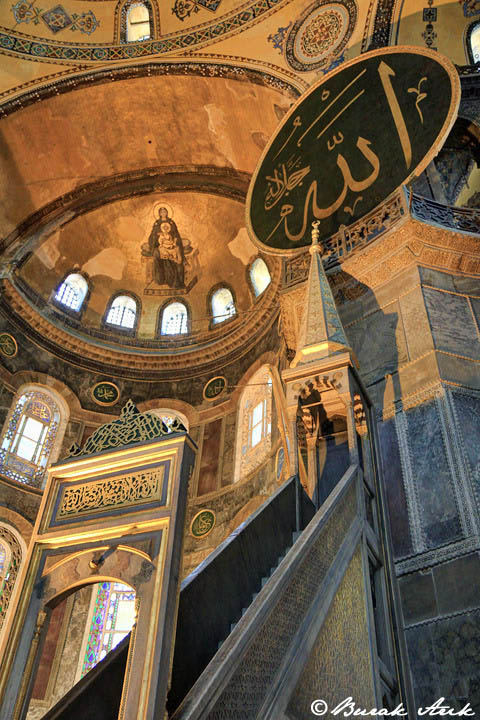The Story Behind the Photo
I named this photo “Two Religions in the Same Frame” because it captures the essence of the Hagia Sophia's remarkable journey through time. This iconic structure in Istanbul began its life as a Byzantine church in 537 AD, serving as the grandest cathedral of its era. Centuries later, in 1453, the Ottoman Empire converted it into a mosque. Then, in 1935, it became a museum, showcasing its layered history to the world. Most recently, in 2020, it was reconsecrated as a mosque, yet its rich past is still evident in every corner of the space.
This photo is a visual narrative of that transformative history. At the heart of the frame is the Minbar, a symbol of its Islamic identity, crowned by a medallion bearing the name "Allah" in elegant Arabic calligraphy. Yet, just above it, the Virgin Mary and Child mosaic from its time as a church watches over, serene and steadfast, as though guarding its past.
The interplay between these two elements speaks to the Hagia Sophia’s role as a bridge between two major religions—Christianity and Islam. The Byzantine mosaics and Ottoman calligraphy coexist in a delicate harmony, neither overpowering the other, but instead telling a story of cultural overlap. Each artistic detail, from the intricate floral patterns to the glowing gold tones, bears witness to how this space has adapted to serve different faiths over 1,500 years.
The title “Two Religions in the Same Frame” reflects the unique way Hagia Sophia preserves its layered identity. It stands as a physical testament to humanity’s shared history, where faith and art intertwine, creating a space that belongs to everyone, regardless of creed or belief.


